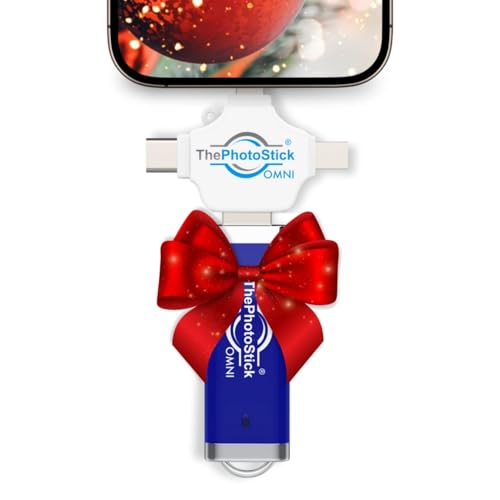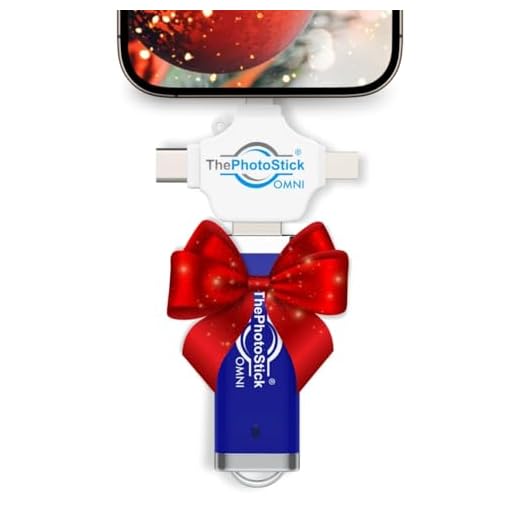




Security cameras are an essential tool for keeping your home or business safe. While many cameras come with cloud storage options, some users prefer to store footage directly on their computer for added security and control.
In this guide, we will walk you through the steps to set up a security camera to store footage on your computer. By following these instructions, you can ensure that your footage is safe and easily accessible whenever you need it.
Step-by-Step Guide: Setting up Security Camera to Store Footage on Computer
Setting up a security camera to store footage on your computer can provide you with a convenient and cost-effective way to monitor your property. Follow these steps to set up your security camera to store footage on your computer:
Step 1: Choose the Right Security Camera
Start by selecting a security camera that is compatible with your computer. Look for cameras that offer cloud storage or have the ability to store footage locally on a memory card or hard drive.
Step 2: Install the Camera Software
Once you have chosen your camera, install the necessary software on your computer. Follow the manufacturer’s instructions to set up the camera and connect it to your computer.
If the camera is Wi-Fi enabled, make sure to connect it to your home network to enable remote access and storage options.
Step 3: Configure Storage Settings
Access the camera’s settings through the software interface and configure the storage settings. Choose the option to store footage locally on your computer and specify the location where the files will be saved.
You may also have the option to set up a schedule for recording or motion detection alerts to save storage space.
Ensure that your computer has enough storage space to accommodate the recorded footage and consider setting up automatic backups to prevent data loss.
By following these steps, you can easily set up your security camera to store footage on your computer for convenient access and monitoring.
Choosing the Right Security Camera System
When selecting a security camera system for your home or business, it is important to consider several key factors to ensure you choose the right one for your needs.
1. Camera Resolution: Higher resolution cameras will provide clearer images, making it easier to identify individuals and details.
2. Camera Type: Decide between dome, bullet, or PTZ cameras based on your surveillance needs and aesthetic preferences.
3. Indoor vs. Outdoor: Make sure to choose cameras that are suitable for the environment where they will be installed, whether indoor or outdoor.
4. Night Vision: Opt for cameras with infrared LEDs for clear footage in low-light conditions or at night.
5. Storage Options: Consider whether you want to store footage locally on a DVR/NVR system or in the cloud for easy access and backup.
6. Remote Viewing: Look for systems that offer remote viewing capabilities, allowing you to monitor your cameras from anywhere using a smartphone or computer.
7. Budget: Set a budget for your security camera system and prioritize features that are most important to you within that budget.
Installing the Necessary Software for Camera Setup
Before setting up your security camera to store footage on your computer, you will need to install the required software to enable communication between the camera and your computer. Here are the steps to install the necessary software:
Step 1: Download the Camera Software
Visit the manufacturer’s website or the camera’s official support page to download the software specific to your camera model. Make sure to download the software compatible with your computer’s operating system.
Step 2: Install the Software
Once you have downloaded the camera software, locate the downloaded file and run the installation wizard. Follow the on-screen instructions to complete the installation process.
| Note: Some cameras may require additional drivers or software components for full functionality. Check the manufacturer’s instructions for any specific requirements. |
Connecting the Security Camera to Your Computer
Before you can store security camera footage on your computer, you need to connect the camera to your computer. Here are the steps to do so:
| 1. | Locate the USB or HDMI port on your security camera. |
| 2. | Insert one end of the USB or HDMI cable into the port on the camera. |
| 3. | Insert the other end of the cable into a USB or HDMI port on your computer. |
| 4. | Wait for your computer to detect the security camera. |
| 5. | Once the camera is detected, you can access the footage stored on the camera and transfer it to your computer. |
Configuring the Camera Settings for Storage
Once you have connected your security camera to your computer, you will need to configure the settings to ensure that the footage is stored properly. Follow these steps to set up storage for your security camera:
1. Access the Camera Settings
Open the camera software on your computer and navigate to the settings menu. Look for options related to storage or recording settings.
2. Choose Storage Location
Select the storage location where you want the footage to be saved. You can choose the local storage on your computer or an external storage device such as a USB drive or a network-attached storage (NAS) device.
Make sure the storage location has enough space to accommodate the video recordings from your security camera.
Follow any additional on-screen instructions to set up the storage preferences for your camera. Once you have configured the settings, your security camera will start storing the footage according to your preferences.
Setting Up a Storage Location on Your Computer
Once you have your security camera set up, it’s important to configure a storage location on your computer to save the recorded footage. Follow these steps to set up a storage location:
Step 1: Choose a Folder
Create a dedicated folder on your computer where you want to store the video recordings from your security camera. Make sure the folder is easily accessible and has enough storage space to accommodate the footage.
Step 2: Configure the Camera Settings
Access the settings of your security camera and navigate to the storage options. Select “Local Storage” or “FTP” and specify the path to the folder you created in Step 1 as the storage location. Make sure to save the settings to apply the changes.
| Tip: | Regularly check the storage space in the designated folder to ensure it doesn’t get full and overwrite old recordings. |
|---|
Adjusting the Recording Schedule for the Camera
Setting up a recording schedule for your security camera is essential to ensure that it captures the footage you need. Follow these steps to adjust the recording schedule:
- Access the camera’s settings through the software or web interface.
- Locate the recording schedule section in the settings menu.
- Choose the days of the week and the times you want the camera to record.
- Adjust the recording duration for each scheduled recording session.
- Save the changes to apply the new recording schedule.
By adjusting the recording schedule, you can customize when the camera records footage based on your specific security needs.
Testing the Camera and Storage Setup
Before relying on your security camera system to monitor your property, it’s essential to thoroughly test the setup to ensure everything is working correctly. Here are some steps to follow to test your camera and storage setup:
- Power on the camera and verify that it is connected to your computer.
- Access the camera’s live feed on your computer to confirm the video quality and angle are satisfactory.
- Test the motion detection feature by moving in front of the camera and checking if it triggers recording.
- Verify that the video recordings are being saved to the designated storage location on your computer.
- Check the playback function to ensure you can review the recorded footage without any issues.
- Test the remote access capabilities to view the camera feed from another device or location.
By conducting these tests, you can identify and address any issues with your security camera setup before relying on it for surveillance purposes.
Securing Your Computer System for Camera Footage Storage
When setting up security cameras to store footage on your computer, it is important to ensure the security of your computer system to prevent unauthorized access to the footage. Here are some tips to secure your computer system:
1. Use Strong Passwords
Make sure to use strong, unique passwords for your computer system and any software used for storing camera footage. Avoid using easily guessable passwords and consider using a password manager to generate and store complex passwords.
2. Enable Firewall and Antivirus Protection
Enable the built-in firewall on your computer and install reputable antivirus software to protect against malware and other cyber threats. Keep your firewall and antivirus software up to date to ensure maximum protection.
Accessing and Managing the Stored Footage on Your Computer
Once you have set up your security camera to store footage on your computer, you will need to know how to access and manage the stored recordings. Here are the steps to help you access and manage the footage:
1. Navigate to the folder where the footage is stored on your computer. This could be a specific folder you designated during the setup process.
2. Open the folder and locate the video files. These files will typically be in a format that is compatible with common video players.
3. Double-click on the video file to open it and view the footage. You can use a video player like VLC Media Player or Windows Media Player to play the recordings.
4. To manage the footage, you can create subfolders within the main storage folder to organize the recordings by date, time, or any other criteria that make sense for your needs.
5. You can also delete old footage that you no longer need to free up storage space on your computer. Be sure to back up important recordings to an external storage device to prevent data loss.
By following these steps, you can easily access and manage the stored footage from your security camera on your computer.
Troubleshooting Common Issues with Security Camera Storage on Computer
Setting up a security camera to store footage on your computer can sometimes come with its own set of challenges. Here are some common issues you may encounter and how to troubleshoot them:
1. Connection Problems: Ensure that your security camera is properly connected to your computer via a compatible cable or network. Check the connection settings on both the camera and the computer to ensure they are configured correctly.
2. Storage Space: Make sure your computer has enough storage space to store the footage from the security camera. If the storage is full, consider transferring the files to an external storage device or deleting unnecessary files.
3. Software Compatibility: Check if the software you are using to access the security camera footage is compatible with your computer’s operating system. Update the software or try using a different application to view the footage.
4. Network Issues: If you are accessing the footage remotely over the internet, check your network connection and bandwidth. Slow internet speeds or network congestion can lead to poor video quality or buffering issues.
5. Camera Settings: Ensure that the settings on your security camera are configured correctly to store footage on your computer. Check the recording settings, storage location, and file format compatibility.
6. Power Supply: Make sure your security camera is receiving an adequate power supply to function properly. Check the power source and cables for any damages or loose connections.
By troubleshooting these common issues, you can ensure that your security camera footage is stored safely and accessible on your computer.









